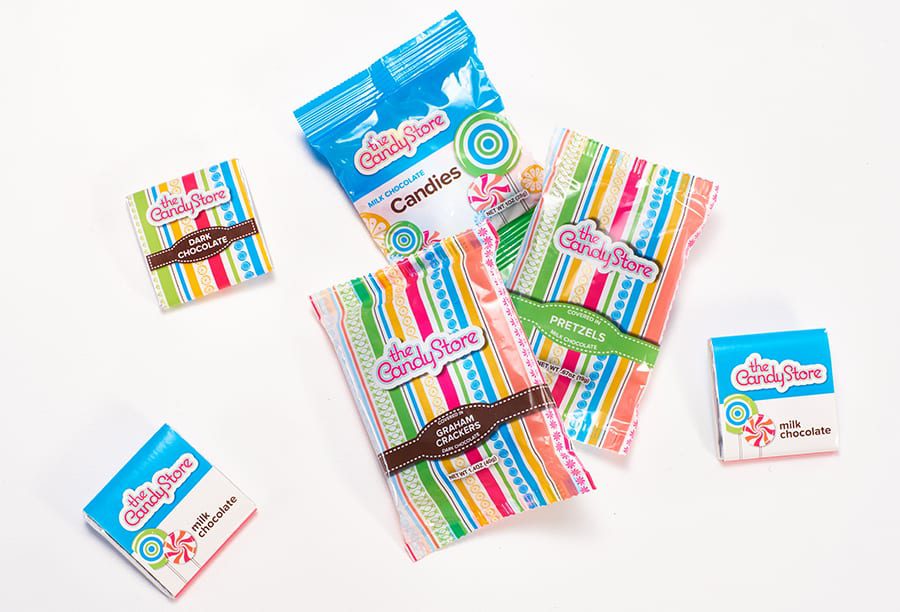In a world where the average person receives 121 daily emails, seemingly endless hours of video are available at the click of a button and instant gratification rules the day, it’s becoming increasingly important to develop packaging to capture a consumer’s attention as quickly as possible. In fact, Vicki Strull, a design strategist and brand visionary, says that with so many outside influences, a brand has approximately eight seconds to attract a consumer before their attention focuses elsewhere.
On Tuesday, Nov. 6, Strull presented a keynote address at the fourth annual Digital Packaging Summit, in which she explained just how important innovative packaging is for brands and how digital printing fits into that equation. The first step along the way, she said, is to change the conversation from one of price to one of value.
Strull explained that by shifting the conversation to value, it immediately demonstrates that the packaging supplier is seeking a long-term relationship with a customer. By taking this approach, Strull said, the printer becomes a resource for packaging designers to help them create innovative packaging using the latest available technologies.
“To become an indispensable resource, you have all this knowledge to impart upon the designers, and you become their mentor,” Strull said. “Designers are trained in the aesthetics of what things look like and they can’t keep up with — and we can’t expect them to keep up with — all the print innovations that are out there.”
With digital printing, Strull explained that one way to introduce high-value packaging is through versioning — a packaging strategy that is better suited for digital, rather than the mass-production capabilities of conventional printing technologies.
Strull explained that part of what makes versioning such an intriguing packaging innovation is that there are several ways it can be applied, each with a different impact on the consumer. For example, randomized versioning is geared toward increasing consumer engagement by increasing interest in the product through several different packaging designs.
Meanwhile, affinity versioning can connect a product to a community of consumers. Examples of this could include a regional packaging campaign that includes a local sports team logo. Strull offered a specific example of affinity versioning in a package design she assisted with, in which a dietary supplement brand utilized labels that featured athletes performing in various sports. Previously, the brand had focused on weightlifting, but by featuring labels with various types of athletes, a wider audience would recognize the product was geared toward them as well.
Strull explained that versioning can also lead to a two-way conversation between the brand and consumer through customized packaging, though she noted there are not many examples of this on the market just yet. In customized versioning, the consumer would dictate specific details of a package designed just for him or her.
While versioning provides a good opportunity to increase the value of the physical aspect of packaging, Strull explained using packaging as a bridge to the digital world can be a highly disruptive strategy with a great deal of potential for brands. She outlined an example of a sunscreen package that, through a digital engagement feature, would send a reminder to a consumer’s phone to reapply the product after a certain amount of time. The reminder served as both a way for the consumer to avoid getting sunburned, but also as motivation to use more of the product, thereby driving repeat sales.
“Packaging is a static touch point,” Strull said. “It’s there. It’s physical. Then you’ve got all these digital touch points. When you connect physical touch points to digital touch points, your conversion goes up 28% because we live in a digital world.”
Beyond helping designers understand what can be accomplished with packaging innovation, Strull explained it’s also important to help designers learn how to express the advantages of these innovations through their impacts on top line sales and bottom line costs. This is because at the C-level, Strull explained, conversations tend to be financial in nature.
In regard to sales, she said that 64% of consumers say a positive experience has the biggest impact on their brand loyalty. Through packaging innovations like versioning, smart packaging, tactile effects and embellishments, consumers become more engaged with and loyal to the brand, thereby increasing sales. Regarding bottom line costs, Strull said that with digital printing, concerns over inventory, brand protection and speed to market can be reduced.
With all of this innovation and new technology impacting a variety of industries, Strull explained there has been a paradigm shift from “the big eating the small” to “the fast eating the slow.” This shift has become evident in the brand landscape with the emergence of agile brands, which are disruptive, embrace innovation and are quick to respond to market trends, competing with brands of scale — the larger, established brands that often have a global reach developed over many years. Package printers, however, now have the tools at their disposal to be the “fire” that provides brands the best of both worlds, she said.
“You can take what’s so very solid and so very static and make it agile,” Strull said. “You’ve [also] got the experience to take someone who is so very agile and knows how to be responsive, but if they want to get something out and do something in mass production, you have that too.”



